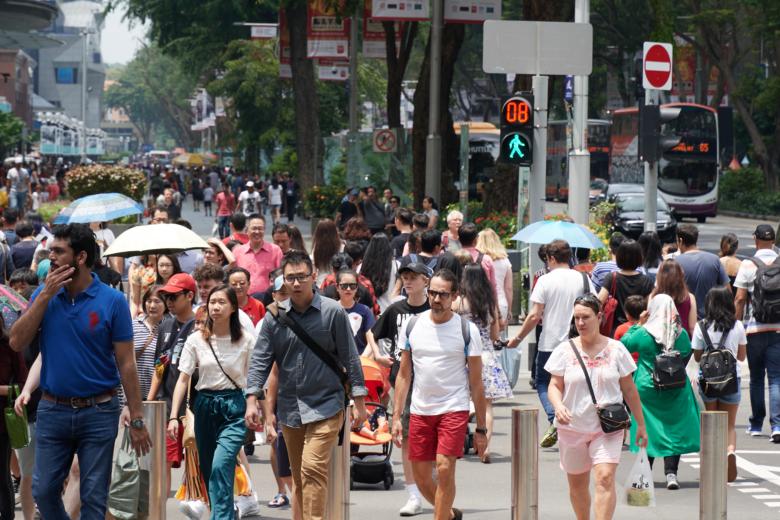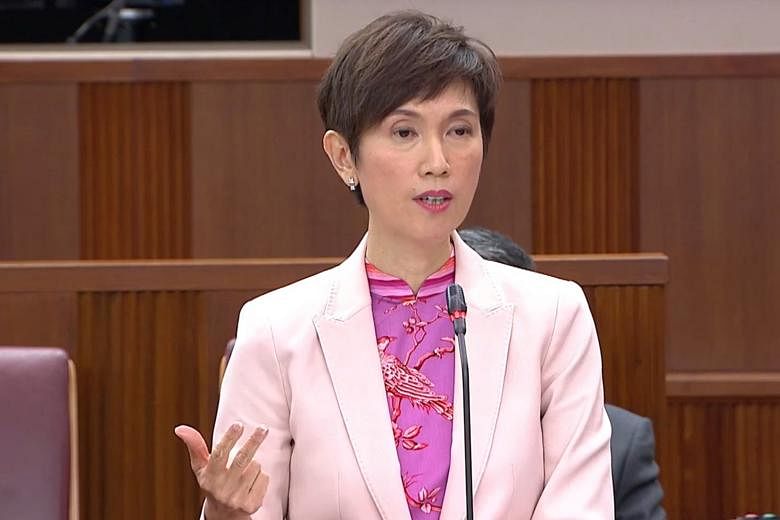Parliament: Singapore's total population likely to be 'significantly below' 6.9 million by 2030
Sign up now: Get ST's newsletters delivered to your inbox

Mrs Josephine Teo, Minister in the Prime Minister's Office, said maintaining immigration will stave off an even sharper decline in Singapore's working-age citizen population, which will soon shrink.
PHOTO: LIN ZHAOWEI FOR THE STRAITS TIMES
Yuen Sin
Follow topic:
SINGAPORE - Singapore is not expected to change its immigration policy, and its population is likely to be "significantly below" 6.9 million by 2030, said Mrs Josephine Teo, who is in charge of population matters in the Prime Minister's Office (PMO).
The figure refers to a projection set out in the 2013 Population White Paper for planning purposes, but which had sparked a public outcry.
Mrs Teo also said that Singapore's population is expected to be below 6 million by 2020, as she outlined the strategies to meet the challenges of a falling birth rate and slow population growth.
Population growth has dropped to 1 per cent over the last five years from 3 per cent for the previous five.
Mrs Teo said the current rate of immigration allows Singapore to achieve close to the same effect as if Singaporeans had a full-replacement Total Fertility Rate of 2.1.
Singapore's TFR was 1.16 last year
She was responding to Mr Gan Thiam Poh (Ang Mo Kio GRC) who had asked the Government's strategies to secure a bright future for Singaporeans, in view of the demographic challenges.
Last year, 22,076 Singapore citizenships were granted, about the same as in the past five years, while the permanent resident population remained largely stable at around 530,000, with 31,849 PRs granted last year, she said.

She added that the Government does not expect any major changes to its immigration policy at the present stage.
Maintaining immigration will stave off an even sharper decline in Singapore's working-age citizen population, which will soon shrink, she said.
The number of Singaporeans aged 20 to 64 is projected to peak at 2.2 million around 2020 and will decline after that, even with immigrants. "Without immigration, it would have started to shrink earlier and decline at a much faster rate," she said.
The Government will remain selective about the profile of Singapore's immigrants, said Mrs Teo, because it affects how Singapore grows a strong national identity.
"This is why we prioritise not only those who can contribute, but those who are also prepared to sink roots in Singapore, and can integrate well here," she added.
In her speech, Mrs Teo also outlined policy enhancements to help Singapore deal with the challenges of a rapidly ageing population and a low total fertility rate.
The five enhancements are:
- Helping couples own a home faster by providing more flexibility in grant and loan processes
- Providing more assistance for couples who face difficulties conceiving by raising the available financial support for Assisted Reproduction Technology (ART) treatment
- Extending MediShield Life to cover serious pregnancy and delivery-related complications
- Introducing a tripartite standard to encourage employers to provide caregiving leave in instances of unexpected caregiving needs. To promote voluntary adoption by employers, such leave will be unpaid and kept to four weeks.
- Extending and enhancing the Work-Life Grant to provide more support to businesses to encourage the adoption of flexible work arrangements
The maximum subsidy available for ART treatment, which includes in-vitro fertilisation (IVF), will be raised from $6,300 to $7,700 for fresh cycles and from $1,200 to $2,200 for frozen cycles from April 1 this year.
More details on the other measures will be released when respective ministries provide updates on their spending plans in the Budget debate next week, said Mrs Teo.
Mrs Teo added that the Ministry of Manpower will provide more updates on how a complementary balance between the local and foreign workforce can be further enhanced, taking in view how foreign employment has also grown at a much slower pace between 2013 and 2015, and even fell in 2016 due to cyclical factors.
She said efforts over the past years have led to good employment outcomes for Singaporeans, leading to a growth in employment rates among those aged 25 to 64, and with real income growth at the median and 20th percentile of full-time employed citizens growing by 3.9 per cent and 4.3 per cent per annum between 2012 and 2017.
Workforce growth from 2018 to 2020 will also slow to about 1 to 2 per cent per year, she said. "Having said that, we think it is a more sustainable pace going forward."

